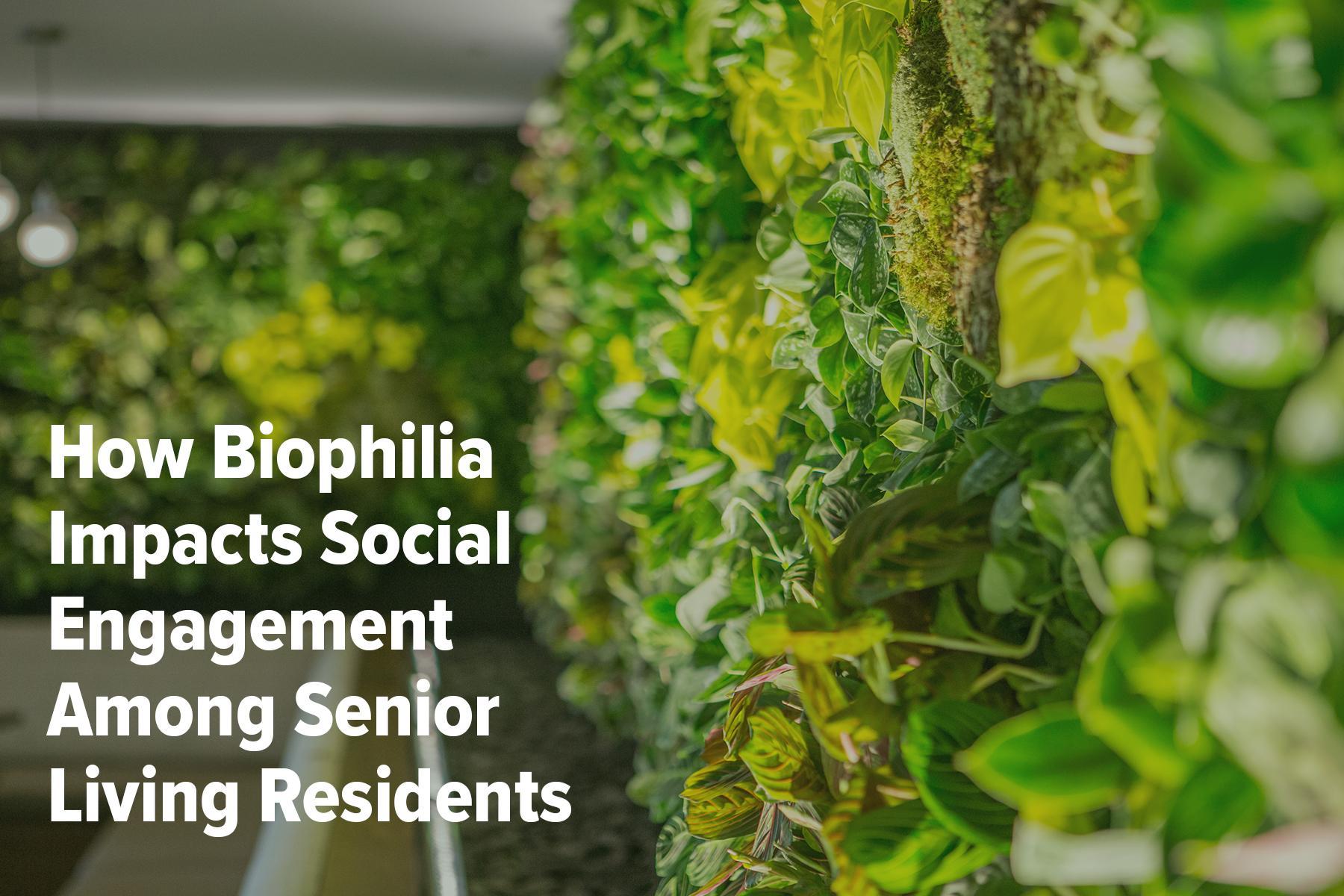How Biophilia Impacts Social Engagement Among Senior Living Residents

As demand for senior living communities continues to gain popularity, and life expectancies continue to increase, senior housing design is becoming more important than ever.
Our very own, Drew Roskos, senior project designer on our A+E senior living team, has a Master of Arts in Gerontology and has made it his mission to create senior living communities that are an extension of its residents by becoming an expert in the physical and cognitive changes in our bodies as we age.
And recently, Drew was awarded a prestigious fellowship through the American Institute of Architects (AIA) Design for Aging Fellow program that allowed him to further his studies and narrow in on the connection between biophilic design and the social participation of senior living residents.
What is Biophilic Design?
Biophilia is a hypothesis that humans have an innate connection to nature. We are drawn to nature’s beautiful forms and we take cues from the environment to know if we should be relaxed or on alert. The application of these ideas in design and architecture is called biophilic design. When we apply these strategies into our senior living communities, we specifically focus on creating experiences that embrace this connection to nature in a way that is specific to older adults; whether that’s through thoughtful material selection or blurring the boundary between inside and outside living.
Why is Biophilic Design Important in Senior Living Communities?
Residents Prefer Spaces with Biophilic Design Elements
Residents are aware of the obvious instances of biophilia when they are engaging in social participation and this is evident in their preferences for common area spaces that have a direct connection to nature or daylight. But on the other hand, residents aren’t always consciously aware of the biophilic instincts that are more abstract in application, such as areas that invoke feelings of intrigue, mystery and protection.
Biophilic Elements Could Improve the Health and Wellbeing of Residents
Residents placed a higher priority on social interaction in the lobby, dwelling units and dining areas, which makes sense since this is where people meet in groups or for casual interactions with other residents or guests. Strategies to increase a connection to nature in these locations could improve the health, happiness and overall wellbeing of residents.
Biophilic Design Can Impact Resident Comfort
There are several barriers that can negatively impact social participation of senior living residents, which makes biophilic design considerations that much more important. Thermal comfort plays a critical role in residents’ opinion of their common spaces; lack of sunlight and the indoor temperature being too cold are common barriers to social participation, as well as difficulty hearing in large spaces and the comfort level of seating.
How Should This Change the Way Senior Living Communities Are Built?
The results of this research study on biophilic design and the social participation of senior living residents will help inform the appropriate application of biophilia into senior living communities. Teams should work with operator partners and consultants to establish specific goals at the project’s inception, similar to how they would with other areas of the project, like sustainability for an example. Then the process should focus on a holistic approach to creating experiences that embrace a connection to nature.
Considerations for implementing biophilic design should include smaller gathering spaces, more direct connections to nature, as well as proper acoustic, lighting and mechanical systems to address the particular needs of older adults. An example of this could be reducing background noise, using non-glare light fixtures or even using more zones in the mechanical design.
Learn more about Ryan’s multi-disciplinary senior living team here.
More about the author and his research:
Drew Roskos, AIA, LEED AP
Senior Project Designer
A primary reason Drew became an architect is to have a positive effect on the built environment and people's lives. It has been his goal to create housing that is an extension of its residents.
Drew is an expert in the field of senior living design, and he uses his knowledge to develop research-based solutions that allow for innovation in architecture and provide better care for and maintain identities of our seniors. He believes environments should be designed for all people at all stages of their lives, and not just the abled or privileged.
Drew’s recent research fellowship allowed him to explore if elements of biophilic design throughout the senior living communities increase social participation of residents. The data collection, which involved resident surveys and onsite observations, took place this spring at various Mather communities in Illinois and Arizona and the findings were presented at the annual Environments for Aging Conference in April 2022. Drew also used this research within his capstone project for his Master of Arts in Gerontology program at Concordia University Chicago.